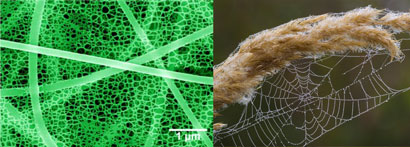Read the most-read Journal of Materials Chemistry articles of June 2011, listed below:
Conversion of carbon dioxide to few-layer graphene
Amartya Chakrabarti, Jun Lu, Jennifer C. Skrabutenas, Tao Xu, Zhili Xiao, John A. Maguire and Narayan S. Hosmane
J. Mater. Chem., 2011, 21, 9491-9493
DOI: 10.1039/C1JM11227A
Advanced materials for lithium batteries
M. Saiful Islam and Linda F. Nazar
J. Mater. Chem., 2011, 21, 9810-9810
DOI: 10.1039/C1JM90082J
Formation and morphology control of nanoparticles via solution routes in an autoclave
Yongchun Zhu, Tao Mei, Yan Wang and Yitai Qian
J. Mater. Chem., 2011, 21, 11457-11463
DOI: 10.1039/C1JM11079A
Synthesis and nanofluid application of silver nanoparticles decorated graphene
Tessy Theres Baby and Sundara Ramaprabhu
J. Mater. Chem., 2011, 21, 9702-9709
DOI: 10.1039/C0JM04106H
Nanostructured cathode materials: a key for better performance in Li-ion batteries
Ragupathy Pitchai, Velmurugan Thavasi, Subodh G. Mhaisalkar and Seeram Ramakrishna
J. Mater. Chem., 2011, 21, 11040-11051
DOI: 10.1039/C1JM10857C
A facile one-step approach for the synthesis and assembly of copper and copper-oxide nanocrystals
Mahmud Diab, Brian Moshofsky, Ilan Jen-La Plante and Taleb Mokari
J. Mater. Chem., 2011, 21, 11626-11630
DOI: 10.1039/C1JM10638D
Size-tunable mesoporous spherical TiO2 as a scattering overlayer in high-performance dye-sensitized solar cells
Yoon-Cheol Park, Yong-June Chang, Byung-Gon Kum, Eui-Hyun Kong, Jong Yeog Son, Young Soo Kwon, Taiho Park and Hyun Myung Jang
J. Mater. Chem., 2011, 21, 9582-9586
DOI: 10.1039/C1JM11043H
A review of advanced and practical lithium battery materials
Rotem Marom, S. Francis Amalraj, Nicole Leifer, David Jacob and Doron Aurbach
J. Mater. Chem., 2011, 21, 9938-9954
DOI: 10.1039/C0JM04225K
Synthesis of monodispersed nanocrystalline materials in supercritical ethanol: a generalized approach
Sandip Kumar Pahari, Tadafumi Adschiri and Asit Baran Panda
J. Mater. Chem., 2011, 21, 10377-10383
DOI: 10.1039/C1JM10617A
Mesoporous titania photocatalysts: preparation, characterization and reaction mechanisms
Adel A. Ismail and Detlef W. Bahnemann
J. Mater. Chem., 2011, Advance Article
DOI: 10.1039/C1JM10407A














